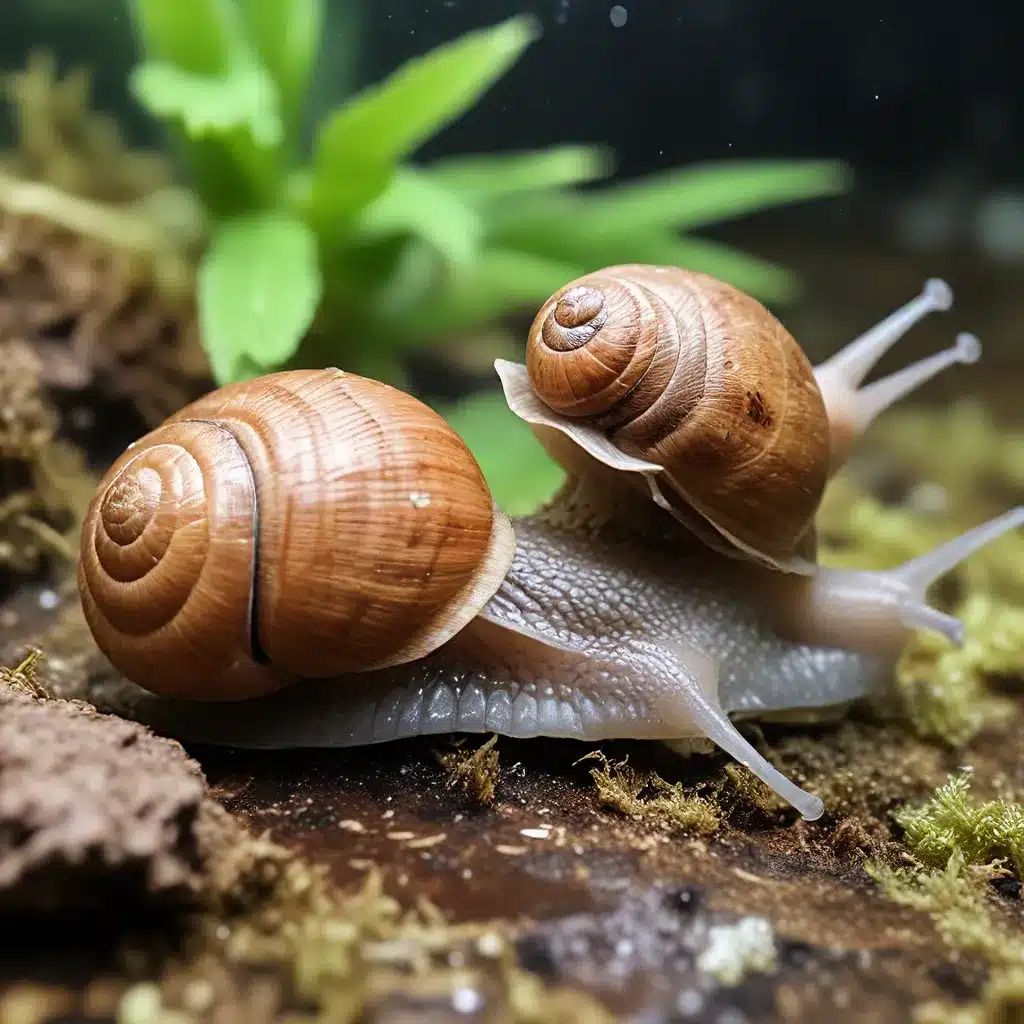
Unlocking the Secrets of Snail Care
Snails are fascinating creatures that can make for wonderful additions to any aquarium or terrarium setup. Whether you’re drawn to their unique shells, their gentle movements, or their role in maintaining a balanced ecosystem, caring for snails requires careful attention to detail. In this comprehensive guide, we’ll explore the intricacies of snail care, from setting up the perfect habitat to ensuring their nutritional needs are met.
Establishing the Ideal Environment
The foundation of successful snail keeping lies in creating a habitat that mimics their natural environments. Land snails thrive in moist, humid conditions, while aquatic snails require a well-maintained aquarium with appropriate water parameters. Regardless of the species, the substrate you choose plays a crucial role in their overall well-being.
Carefully selecting the right substrate is essential for a snail’s burrowing and foraging needs. Avoid using substrates with sharp edges or rough textures, as these can potentially damage the delicate underside of the snail’s foot. Organic, fine-grained substrates like coconut coir or a sterilized soil mixture are excellent choices, as they provide a soft, forgiving surface for the snails to navigate.
Maintaining the proper humidity levels is equally important for land snails. Mist the substrate regularly, ensuring it remains damp but not waterlogged. Provide hiding spots, such as driftwood, rocks, or live plants, to allow the snails to retreat and regulate their moisture levels. For aquatic snails, ensure the water parameters, including pH, temperature, and dissolved oxygen levels, are within their preferred ranges.
Feeding for Optimal Health
Snails are generally herbivorous, relying on a varied diet of fresh greens, vegetables, and supplemental calcium sources. Offer a diverse selection of leafy greens, such as lettuce, spinach, and kale, as well as crunchy vegetables like carrots and cucumbers. Supplement their diet with a small amount of protein, such as boiled egg or shredded chicken, every few weeks. Providing a calcium-rich food source, such as cuttlebone or crushed eggshells, is crucial for maintaining the integrity of their shells.
Ensuring a balanced diet is essential for snail health and longevity. Avoid feeding them citrus fruits or other acidic foods, as these can disrupt their delicate pH balance. It’s also important to remove any uneaten food to prevent the buildup of harmful bacteria or mold in the enclosure.
Cultivating Enrichment and Engagement
Snails are not just low-maintenance pets; they can also be fascinating to observe and interact with. Incorporate various elements into their habitat to encourage natural behaviors and stimulate their senses. Consider adding live plants, both rooted and floating, to provide hiding spots and foraging opportunities. Arrange driftwood, rocks, or other decorative elements to create a visually interesting environment.
Interacting with your snails can be a rewarding experience, but it’s crucial to handle them gently and with care. Avoid grabbing or squeezing their shells, as this can cause damage. Instead, gently scoop them up from the substrate or allow them to crawl onto your hand. Observe their feeding, burrowing, and climbing behaviors, and take note of any changes that may indicate potential health concerns.
Maintaining Water Quality and Cleanliness
For aquatic snails, regular water changes and filtration maintenance are essential for their well-being. Perform partial water changes of 25-30% every week, using dechlorinated, temperature-matched water. This helps to remove any accumulated waste, maintain appropriate water parameters, and replenish essential minerals.
Invest in a high-quality filtration system that can effectively remove debris and waste while ensuring adequate water circulation. Regularly clean the filter media and components to prevent the buildup of harmful bacteria or algae. Additionally, consider incorporating live plants or snail-safe ornaments that can help to naturally process and absorb excess nutrients in the water.
Fostering a Harmonious Community
Snails can thrive in community environments, but it’s essential to consider the compatibility of different species. Research the specific needs and behaviors of the snails you plan to keep together. Avoid mixing aggressive or territorial species, as they may compete for resources or even harm one another.
When introducing new snails to an existing setup, do so gradually and monitor for any signs of stress or conflict. Provide ample space, hiding spots, and food resources to minimize competition and encourage a peaceful coexistence.
By carefully crafting a snail-friendly habitat, providing a balanced diet, and maintaining optimal water quality, you can create a thriving snail sanctuary that will bring joy and fascination to your aquarium or terrarium. Remember, with the right care and attention, these captivating gastropods can become cherished members of your aquatic family.
King Aquarium is your go-to resource for all things aquarium-related, from equipment and supplies to expert advice. Explore our comprehensive range of products and services to elevate your snail keeping experience.

